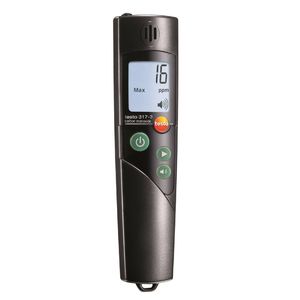

- Products
- Catalogs
- News & Trends
- Exhibitions
Basic sound level meter 815integratingclass 2digital
Add to favorites
Compare this product
Characteristics
- Type
- integrating, basic
- Precision class
- class 2
- Other characteristics
- digital
- Noise level
Max.: 130 dB
Min.: 30 dB
Description
✔ Frequency evaluation according to characteristic curves A and C
✔ Easy to adjust (adjustment screwdriver included in the scope of delivery)
✔ Min./max. memory
✔ Integrated tripod knuckle screw (1/4 inch)
Determine the noise level quickly, easily and reliably in your day-to-day work: with the testo 815 sound level meter.
The testo 815 sound level meter can be used for control measurements in the air conditioning and heating area, on combustion systems or at workplaces. It can also enable quick and precise assessment of machinery and discotheque noise.
Applications of the testo 815 sound level meter
✔ Heating technology: measurement of the volume of burners
✔ Industry and trade: measurement of machinery noise
✔ Event technology or public authorities: noise levels at events
✔ Building services: simple measurements by the caretaker when there are complaints
The testo 815 is the ideal instrument for the evaluation of sound level in everyday work. The instrument can be used for monitoring measurements in the areas of air conditioning or heating, on combustion plants or at workplaces, however machine or discotheque noise can also be evaluated quickly and precisely.
Using the Fast/slow button, the measurement time can be set from 1 s to 125 ms, in order to better evalaute the noise source. The frequency analysis can also be switched from characterisitc curve A to C. The characteristic curve A corresponds to the sound pressure perception of the human ear, whereas characteristic curve C can also evaluate the low-frequency components of a sound.
Catalogs
Related Searches
- Sound level meter
- Digital sound level meter
- Class 2 sound level meter
- Basic sound level meter
- Integrating sound level meter
- Air quality monitor
- CO2 air quality meter
- Portable air quality monitor
- CO air quality meter
- Air quality meter with display
- Bluetooth air quality meter
- Environmental analysis air quality meter
*Prices are pre-tax. They exclude delivery charges and customs duties and do not include additional charges for installation or activation options. Prices are indicative only and may vary by country, with changes to the cost of raw materials and exchange rates.






